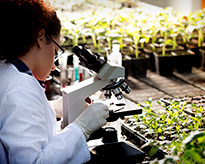This project sees that an atmospheric humidifier is set up in different strategic locations on earth and that water is converted to water vapour and subsequently converted back in urban garden locations.
In Saint Louis, Mississippi, NASA uses 125000 acres of land to test their Saturn V rocket. These rockets in particular run off a mixture of liquid hydrogen, oxygen, and other fuels; the environmental footprint being nothing more than water vapor. Each test fire yields large plumes of smoke consisting of pure hydrogen and oxygen; which later turn into rain in a few hours time. It’s our understanding that the same principles can be used in quieter systems to cool the planet and promoting forestation; specifically in dry, arid climates like the desert, and in frozen tundras like the arctic circle.
Each facility will basically consist of a large reservoir of salt water pumped in from the ocean and a fuel cell. This water is converted to hydrogen and oxygen through electrolysis and than pumped into the atmosphere. It is then naturally turned into rain thousands of miles away.
These facilities will be placed strategically throughout the globe; based partly on weather patterns, human population, and the land we seek to change through forestation. We have already identified several areas to construct the facilities; specifically along the coast of northern Africa and east of Saudi Arabia. The increase in precipitation will turn the deserts there into dense jungles.
In colder climates, the increase in water vapour means an increase in snow fall; and consequently, the formation of pack ice. It is estimated from wind patterns, that if seven cloud seeding facilities were built along the coast of Alaska and Nunavut, the ice-sheets formed during a single winter would still be around the following winter. Ice sheets have been proven to reflect 50 to 70 percent of solar energy, hence their significance in preventing climate change. With these facilities converting sea water to water vapour, snow fall would take place all year around.
Cities and towns with our food production facilities will benefit immensely from cloud seeding as each facility will have atmospheric water generators on site. This technology would effectively turn water vapour back into usable drinking water. In fact, this technology is already for sale to consumers by various manufacturers, and only needs to be scaled up to meet the demands of the immediate population.
To the left is an interactive wind map depicting the














